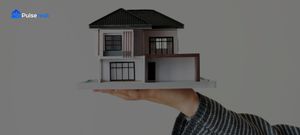The Safety Premium: A Correlation Study of Crime Rates and Property Appreciation
The perception of safety significantly influences real estate markets. Areas with lower crime rates, such as those in vacation hotspots, often command higher property values and experience faster sales. This analysis delves into crime data across various locations to explore the correlation between crime rates and key real estate metrics.
Understanding the Data
This study utilizes crime data categorized by type, including homicide, robbery, assault, property crime, sex offenses, and other offenses. By examining the frequency of these crimes in different areas, we can begin to understand how safety concerns might impact housing markets. For instance, in areas with high crime rates, such as those experiencing declines in property values, the impact on property appreciation can be significant.
Analyzing Crime Statistics
One area, with a total crime count of 143,209 incidents, shows a significant concern for property crime, with a total count of 59,246 incidents. Specifically, Larceny/Theft Offenses account for 27,070 of these incidents, while Burglary/Breaking & Entering contributes 3,105 incidents. Assault offenses are also prevalent, totaling 65,379 incidents. In contrast, another area, with a total crime count of 46,069 incidents, presents a different picture, with assault offenses being the most common, totaling 23,335 incidents.
In areas with lower crime rates, such as those experiencing strong property appreciation, the impact on property values can be positive. For example, areas with property crime rates of less than 10,000 incidents per year may command higher property values due to their perceived safety and desirability.
The Impact on Property Values and Time-to-Market
While specific property value and time-to-market data are not available for these areas, it's reasonable to infer that areas with higher crime rates may experience downward pressure on property values and longer time-to-market. Buyers often prioritize safety when choosing a location, and areas with high crime rates may be less desirable, leading to lower demand and potentially lower prices. Conversely, areas with lower crime rates may command a premium due to their perceived safety and desirability.
Exploring the Relationship Between Crime and Real Estate
The relationship between crime rates and real estate is complex and multifaceted. Several factors can influence this relationship, including:
- Perception of Safety: Even if crime rates are relatively low, a perception of unsafety can negatively impact property values.
- Type of Crime: Violent crimes, such as homicide and assault, may have a more significant impact on property values than property crimes, such as theft and vandalism.
- Neighborhood Characteristics: Other neighborhood characteristics, such as school quality, access to amenities, and overall aesthetics, can also influence property values and may mitigate the impact of crime rates.
- Economic Conditions: Economic conditions can also play a role. During economic downturns, crime rates may increase, and property values may decline.
Data-Driven Insights and Investment Strategies
Understanding the correlation between crime rates and real estate metrics can provide valuable insights for investors and homebuyers. By carefully analyzing crime data and considering other relevant factors, it's possible to identify undervalued properties in areas with improving safety or to avoid overpaying for properties in areas with high crime rates. For instance, an investor might focus on areas with relatively high crime rates but also significant revitalization efforts, such as those experiencing significant property value growth, offering the potential for significant appreciation as crime rates decline and the neighborhood becomes more desirable.
Conclusion
The safety premium is a real and significant factor in real estate markets. Areas with lower crime rates often command higher property values and experience faster sales. By carefully analyzing crime data and considering other relevant factors, investors and homebuyers can make more informed decisions and potentially achieve better outcomes. While this analysis provides a general overview, it's crucial to conduct thorough research and consult with real estate professionals before making any investment decisions.
For those interested in exploring related topics, consider reading our rates analysis to understand how location impacts vacation rental performance. Additionally, our property analysis on wildfire risk offers insights into another critical factor affecting property values. Finally, explore our Data-driven analysis of real estate price trajectories to identify emerging real estate hotspots.
Visualizing the Data
While specific charts and tables are not included in this response, consider visualizing the crime data using bar charts or heatmaps to illustrate the distribution of crime types across different areas. This can provide a more intuitive understanding of the data and highlight key trends.
Additional Considerations
It's important to acknowledge that crime data is just one factor to consider when evaluating real estate markets. Other factors, such as economic conditions, demographics, and local amenities, can also play a significant role. A comprehensive analysis should consider all of these factors to provide a more complete picture of the market.
Furthermore, it's essential to use crime data responsibly and avoid perpetuating stereotypes or discriminatory practices. The goal of this analysis is to provide insights that can help investors and homebuyers make more informed decisions, not to stigmatize or marginalize any particular community.
By understanding the complex relationship between crime rates and real estate, we can work towards creating safer, more prosperous, and more equitable communities for all.
Internal Linking Opportunities
For those interested in exploring related topics, consider reading our articles on vacation home hotspots, wildfire risk, and price trajectories.



